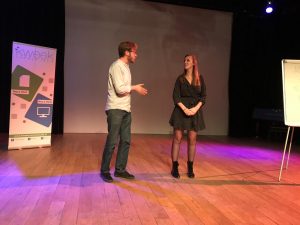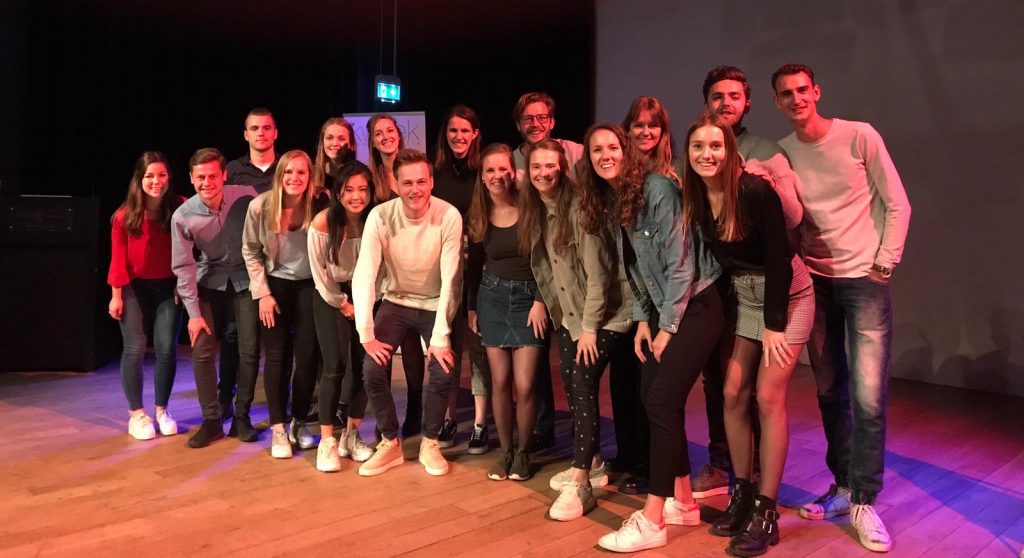Kweek was part of a different setting last week. Instead of working for a workshop behind the scenes and watching how it goes, we literally were on stage. We had to get out of our comfort zone to learn how to speak and tell convincingly. Ruben Blom showed us that the power of a story comes from the contact you can make with your audience, both in what you say and in how you say it. In this blog, we share our experiences and tips with the presentation training of Rotys – Gym for Communicators.
“All I want to do is CHANGE your mind”
This is the claim Ruben started his training with. And he certainly made it true. As students, when we give a presentation, we quickly think of a setting in which you present the results of your research to a workgroup. But there are many more places where you want people to really listen to you: from a meeting of your committee to convincing a potential employer to hire you. In every setting you work with a story to achieve something from your audience. You have to make a good connection with your audience and that’s what it’s all about! You can determine the content of your story yourself, but if the audience does not pay attention to you, there is little to convince. So make sure you check what moves them, what is on their mind and what their thoughts are and let that be the starting point of your convincing story!
Counterarguing and convincement with values
Your audience as the focus point… how? Ruben had a surprising view on this. You have to consider the counter-arguments of your audience. Take, for example, five counterarguments and refute them in your presentation. This way, you can respond to the resistance the audience may have. They are also surprised that their thoughts are answered, which leads step by step to convincing their opinions. It is also important to discuss your personal experiences, which makes the connection between you and the audience stronger. Because they become more open to your story, it is important to end your story strong. Do this by ending with your goal (what do you want from your audience?) and the corresponding values for your audience (what does it bring them?).
With these insights we have come to the following instructive tips:
- Do you empathize with your target group? Think in advance about what thoughts they may have and what your counter-arguments might be in order to attract attention and convince them.
- Make your story your own. Try to connect with your audience by giving your story a personal touch. For example, tell your own experiences or personal opinion.
- Always end with your goal and the associated values for your audience.
An eye-opener
The training was a real eye-opener for us. At the beginning of the training, we were mainly concerned with telling our story well. This means that you are more concerned with yourself than with the audience. It was cool to see that you can tell your story better in verbal or non-verbal communication, if you focus more on the audience. We also see the strategy behind a presentation now. This makes you more purposeful during the presentation, which gives you a confident attitude. We really enjoyed doing this training together with the boards of Unipartners Tilburg and Integrand Tilburg. It was a diverse group with different stories, which certainly inspired each other!
You can learn so much about influencing techniques, the best (non) verbal behavior during a conversation or how to best attract the attention of your audience, but in the end you don’t think about that when you are in front of an audience. Although it is of course interesting and instructive what we learn at CIW, it is not always applicable when you really have to stand on stage. This training gave us a different view on how to speak convincingly and we certainly recommend that you try this yourself.
Do you want to improve your presentation skills or make your story more convincing after reading this blog? Take a look at www.rotys.nl for the possibilities!


